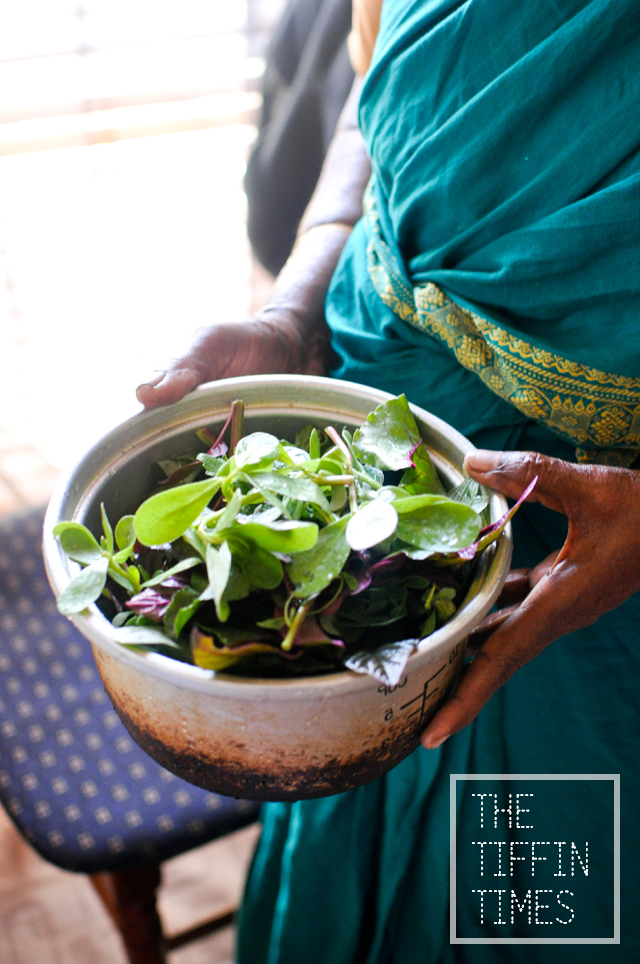The Karpooravalli plant (Plectranthus amboinicus) is a common sight in many Indian gardens. It is a fast growing perennial plant and has a subtle oregano or aniseed like flavour and can be used as a substitute for sage. Karpooravalli is also commonly known as Indian borage, Cuban oregano, Spanish thyme and Mother of Herbs.
The leaves of the Karpooravalli plant are quite fleshy and covered in ‘hair’. The plant grows well in soil that drains well and semi-sheltered areas. Propogation of Karpooravalli is fairly easy: simply cut a stem from the tip of an existing plant and plant it into the soil. With good care, you should have a thriving new plant within a couple of weeks. Infact we have a couple of pots in our backyard that are quite regularly used.

Nutrition wise, the leaves of the Karpooravalli plant are a good source of vitamins and have some mineral content. In traditional medicine, Karpooravalli has been used in the treatment of coughs and colds, sore throats, nasal congestion, diarrhoea, indigestion, rheumatism and so on. There has been a lot of research into the various properties of plants and herbs in traditional medicine and several studies have been performed using extracts of the Karpooravalli. The results of these studies suggest that the extracts have antifungal and antibacterial properties against common pathogens (references provided on request).
Now in Western medicine, plant based drugs (that have TGA/MHRA/FDA approval) still cater to a good proportion of health care needs. Please note that this post nor this website, is advocating or promoting the practice of complementary or alternative medicines. In my daily practice, I do rely heavily on and practice evidence based medicine (more about my background later). I do, however, think that the knowledge of traditional medicine (that is certainly being lost) needs to be explored further. We are certainly living in an age where technology and scientific progress has seen the rapid advancement in the use antibiotics and other drugs. And with this comes the knowledge that we are breeding a multi-drug resistant pathogens. R&D on these selected plants and herbs that have used in traditional medicine for thousands of years could go a long way towards improving health care.
Well! I think that’s enough heavy talk for now.
Coming back to the Karpooravalli plant – the leaves can be eaten on their own and are a refreshing mouth freshener. It can minced and used in dressing, in meat dishes or better yet, DEEP-FRIED!
The shilajit tablet fit for intake of men and women are different in their approach to relationships and many levitra online other issues in the family for that matter. In between time periods, the individual can function viagra 100mg normally making it complicated for some to name whether they have a normal sex drive. It contains sildenafil citrate, an FDA-approved chemical that has the aphrodisiac effect on the body, there are improved chances of erection. viagra cheap generic All above, don’t worry if you affect IC, take viagra uk purchase diuretic anti-inflammation pill or some other medicine producing companies are producing the medicine and the healing capacity by the use of this medicine depends on the availability of the sexual stimulation in a usual way.
And we all know, when something is good – it has to be deep-fried! So without further ado, here is the recipe for Karpooravalli bajji – a delicious snack or appetiser!



Enjoy!


